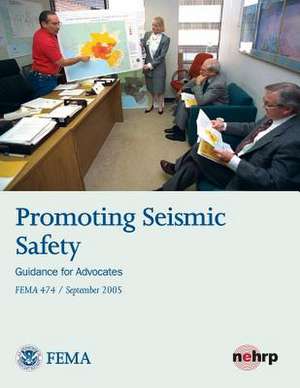Promoting Seismic Safety
Autor U. S. Department of Homeland Security, Federal Emergency Management Agencyen Limba Engleză Paperback
Preț: 101.63 lei
Nou
Puncte Express: 152
Preț estimativ în valută:
19.45€ • 20.36$ • 16.09£
19.45€ • 20.36$ • 16.09£
Carte disponibilă
Livrare economică 17-31 martie
Preluare comenzi: 021 569.72.76
Specificații
ISBN-13: 9781484027707
ISBN-10: 1484027701
Pagini: 54
Dimensiuni: 216 x 279 x 3 mm
Greutate: 0.15 kg
Editura: CREATESPACE
ISBN-10: 1484027701
Pagini: 54
Dimensiuni: 216 x 279 x 3 mm
Greutate: 0.15 kg
Editura: CREATESPACE
